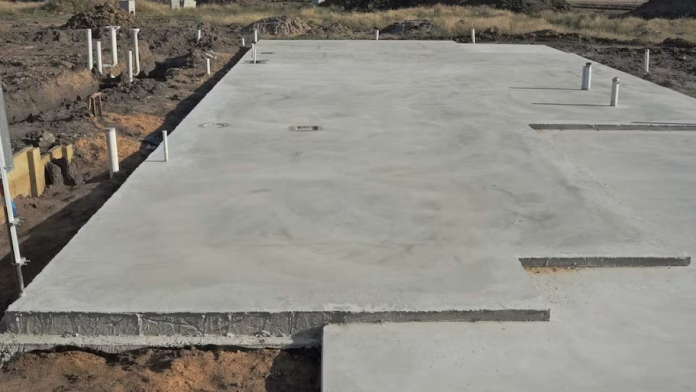A slab on grade foundation is a type of foundation where a concrete slab is poured directly onto the ground, serving as both the base and floor of the structure. This method is popular in residential and commercial construction due to its cost-effectiveness and durability. However, like any foundation type, it has its advantages and drawbacks. Below, we explore the pros and cons of slab on grade foundation to help you determine if it is the right choice for your project.
Pros of Slab on Grade Foundation
1. Cost-Effective Construction
One of the biggest advantages of a slab on grade foundation is its affordability. Since it requires less labor and fewer materials compared to a basement or crawl space foundation, the overall construction cost is lower. Builders can also save on excavation costs, as only minimal digging is needed.
2. Faster Installation
Slab on grade foundations are relatively quick to construct. Once the site is properly prepared and the concrete is poured, the foundation can be ready within a few days. This allows for a shorter construction timeline, which is especially beneficial for projects with tight deadlines.
3. Energy Efficiency
Because the slab is in direct contact with the ground, it benefits from the earth’s thermal mass, helping to regulate indoor temperatures. This can lead to lower heating and cooling costs, making homes with slab on grade foundations more energy-efficient.
4. Reduced Risk of Pests and Mold
Unlike crawl space foundations, which can become breeding grounds for pests and mold due to moisture buildup, slab on grade foundations eliminate these risks. Since there is no empty space beneath the house, termites, rodents, and other pests have fewer opportunities to invade.
5. Structural Stability
A well-built slab on grade foundation offers excellent structural integrity, particularly in areas with stable soil conditions. The solid concrete base helps distribute the building’s weight evenly, reducing the risk of shifting or settling over time.
Cons of Slab on Grade Foundation
1. Susceptibility to Cracking
A major disadvantage of slab on grade foundations is their vulnerability to cracking. Factors such as soil movement, temperature fluctuations, and improper installation can cause cracks to develop in the concrete. If these cracks become severe, they can compromise the foundation’s integrity.
2. Limited Access to Plumbing and Electrical Systems
Since plumbing and electrical lines are often embedded within the slab, repairs and modifications can be difficult and expensive. If a leak occurs, the concrete may need to be cut open, leading to costly and time-consuming repairs.
3. Poor Insulation in Cold Climates
In colder regions, slab on grade foundations can be less effective in maintaining warmth. Without proper insulation, heat loss through the concrete can lead to higher energy bills. Additionally, frost heaving—where freezing soil pushes the foundation upward—can cause damage.
4. Potential Drainage Issues
If the site is not properly graded, water drainage problems can arise. Since the foundation sits at ground level, poor drainage can lead to standing water near the structure, increasing the risk of moisture damage and foundation erosion.
5. Lack of Storage and Basement Space
Homes built on slab on grade foundations do not have a basement, which means less storage space. This can be a disadvantage for homeowners who need extra room for utilities, storage, or future expansion.
Conclusion
The pros and cons of slab on grade foundation highlight its practicality and limitations. While it is a cost-effective, durable, and low-maintenance option, it may not be ideal for all climates or construction needs. Homeowners and builders should carefully consider soil conditions, climate factors, and long-term maintenance before choosing this foundation type.










